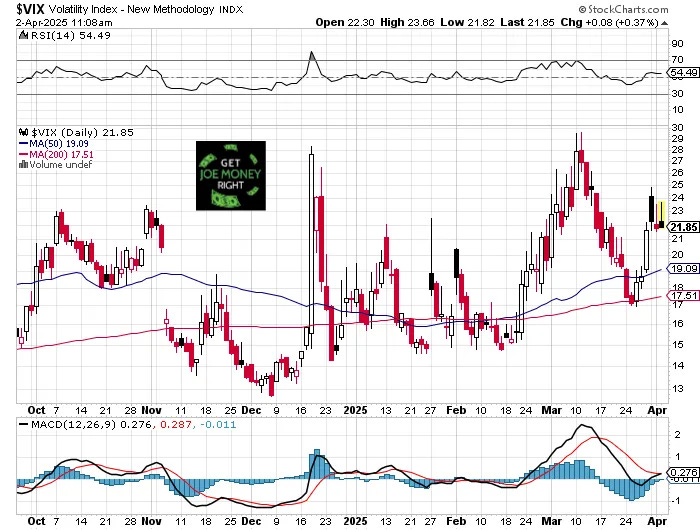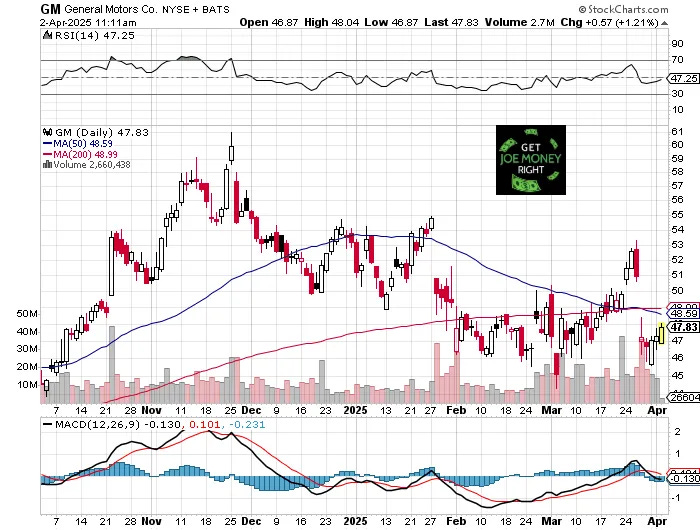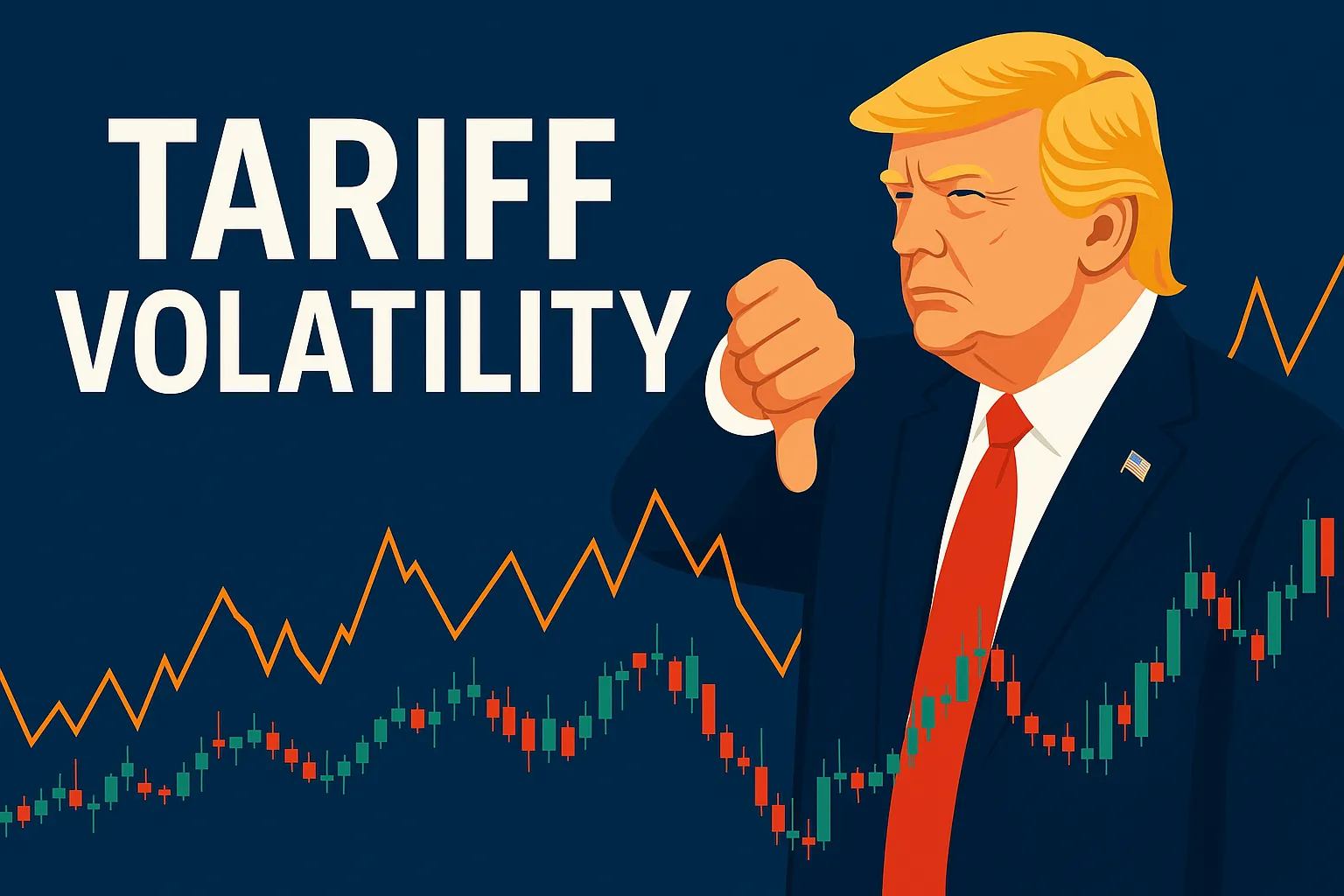How to Make Money When The Trump Tariffs Shake the Market
Donald Trump’s approach to tariffs isn’t just unconventional—it’s transforming market dynamics right before our eyes.
A few weeks ago, Trump’s aggressive yet strategic stance threw markets on a rollercoaster ride. Both traders and investors are caught between excitement and anxiety, causing market fluctuations from bullish exuberance to bearish dread.
Here’s the kicker: once you crack the code on Trump’s tariff strategy, a floodgate of profitable opportunities opens up.
More Than Trade—A Power Play
Trump views tariffs not merely as economic tools but as powerful leverage points to push broader political goals like border security and combating drug trafficking.
Take Canada and Mexico, for instance. Trump boldly threatened imposing sweeping 25% tariffs. Most investors shrugged it off—until he announced they’d hit within days. Suddenly, futures markets cratered; the Dow plunged hundreds of points overnight as fears about disrupted supply chains surged.
Then came the twist:
- Mexico promptly committed to deploying 10,000 troops to help stem immigration, securing a 30-day delay on tariffs.
- Canada swiftly followed suit with its own concessions, buying similar relief.
The immediate result? Markets rebounded sharply, recouping much of their losses.
Playing the New “Trumpian” Market Volatility
Today’s markets revolve primarily around two massive influences:
- Interest rates
- Trade negotiations
Gone are the days when earnings and economic indicators alone steered the markets. Now, a single tweet or headline about tariffs can instantly ignite bullish optimism or bearish fear.
- Bullish Volatility emerges when investors sense Trump will land favorable trade deals without imposing heavy tariffs. Stocks rally as traders anticipate better international trade terms and stronger economic prospects.
- Bearish Volatility takes hold when severe tariffs seem inevitable, prompting fears of escalating trade wars and economic pain. Markets sell off rapidly, especially in sectors like technology, automotive, and manufacturing.
This tug-of-war creates quick, sharp market movements. Smart investors understand this volatility isn’t a threat—it’s an invitation to profit.

How to Strategically Profit from Tariff Swings
Volatility isn’t something to fear; it’s something to leverage. Here’s a tactical playbook for thriving amid tariff-induced market swings:
- Use VIX Options Strategically:
- When the VIX drops below 13-14, consider buying VIX call spreads expiring in 30-60 days, capturing profits when fear spikes again.
- When the VIX climbs to around 23-25, buying put spreads can set you up nicely for volatility’s retreat.
- Crucially, lock in your profits swiftly. Volatility spikes rarely last long.
- Adopt a Trader’s Mindset (Even If You’re an Investor):
- Don’t just buy and hold blindly. Think like a trader—recognize short-term risks, manage your downside aggressively, and swiftly pivot when needed.
- Turn short-term trades into long-term investments if your thesis proves correct.
Consider this scenario:

- General Motor’s stock drops below $40 amid tariff fears, pushing its dividend yield above 1.25%. You seize the opportunity and buy.
- If trade tensions ease, your quick trade transforms into a high-yield investment with significant upside potential.
Our New Reality: More Volatility Ahead
Looking into 2025, the market won’t become calmer—it’ll likely intensify.
Geopolitical tensions, protectionism, and technological rivalries will only add fuel to volatility’s fire. Tariffs and trade disputes will remain front-and-center, with abrupt policy shifts now the norm, not the exception.
To navigate this, keep an eye on:
- Immediate market responses to trade news.
- Long-term implications of shifting global alliances and trade relationships.
Trump’s tariff-driven negotiations have fundamentally changed market dynamics. The result?
Savvy investors and traders who stay nimble, adapt quickly, and leverage volatility as a tool rather than an obstacle will dominate.
Remember, volatility is an opportunity—not an obstacle.
Stay sharp, stay flexible, and always be ready to profit from the next big market move.
Disclaimer: This post is for educational purposes only and is not financial, legal, or tax advice. Do your own research or consult a qualified professional before making any decisions.
Affiliate Disclosure: GetJoeMoneyRight.com is a participant in the Amazon Services LLC Associates Program, an affiliate advertising program designed to provide a means for sites to earn advertising fees by advertising and linking to Amazon.com and affiliated sites.

